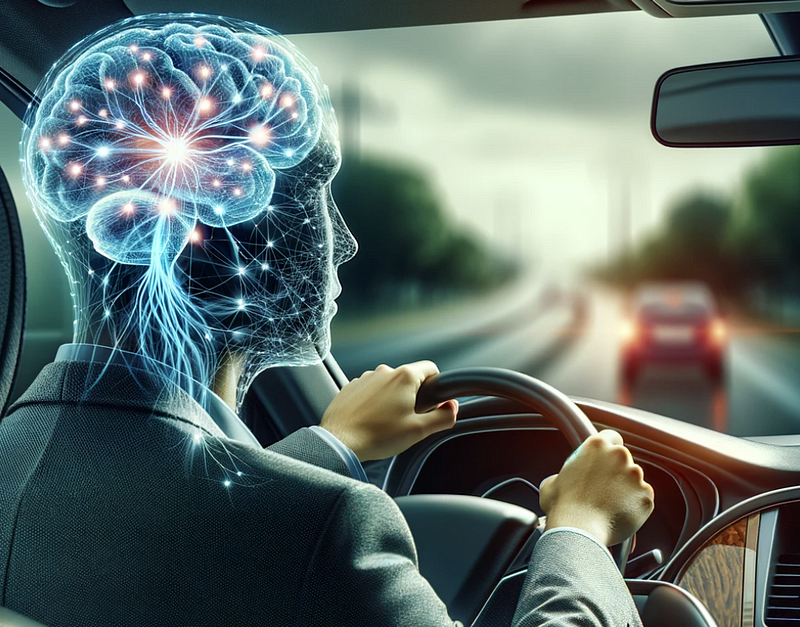Driving the Mind: Who's in Control?
Written on
Chapter 1: The Enigma of Thought Generation
The comparison between a driver operating a car and the brain governing a person is both intriguing and multifaceted. To comprehend the origins of our thoughts and ideas, we must delve into the complex workings of the brain and ponder the question: who is truly in control?
The Enigma of Thoughts
Thoughts can often appear to emerge spontaneously. One moment, you might be sitting quietly, and the next, a memory of a long-lost friend resurfaces or a brilliant idea for a work project strikes you. These seemingly random thoughts arise from a network of neurons that are in continuous communication.

Who Guides Our Brain?
The human brain is composed of roughly 86 billion neurons, all interconnected by synapses. When a thought occurs, these neurons activate and transmit signals among themselves, akin to how a driver uses visual and tactile signals to navigate a vehicle. But what prompts these neurons to activate?
The Inner Driver
The brain operates within a broader context, influenced by both internal emotions and external stimuli: memories, sensory experiences, and even the biochemical agents circulating in our bodies. When a decision is made, like choosing to turn left, it results from a complex interplay between conscious thoughts and subconscious processes.

The Driver at the Wheel
Our conscious mind, often referred to as the ego, appears to be in charge, as it is the aspect of ourselves that acknowledges our thoughts and choices. However, the subconscious—filled with our experiences, instincts, and ingrained beliefs—equally influences our actions.
The Subconscious Influence
The subconscious mind functions like a silent partner, subtly guiding and affecting our actions without our explicit awareness. It governs automatic responses, such as dodging an obstacle or opting for comfort food during stressful times, often steering the car without the conscious mind's awareness.
The Impact of the Environment
Similar to how a driver must consider road conditions, traffic signals, and other vehicles, our brains are swayed by our surroundings. The sensory information we perceive—what we see, hear, smell, feel, and taste—plays a pivotal role in molding our thoughts and behaviors. Social interactions, cultural influences, and individual experiences serve as the traffic signs and signals guiding our lives.
When you encounter something that evokes an old memory, it’s the environment triggering your subconscious to inform your conscious mind. This interaction between our surroundings and our cognitive processes is an ongoing choreography that fuels our thoughts and inspirations.
Who Holds the True Reins?
So, who is really at the wheel? The straightforward answer is that it is a collaborative effort involving our conscious thoughts, subconscious influences, and environmental factors. Each component contributes uniquely to shaping our thoughts and actions.
The brain functions as a sophisticated mechanism steering the vehicle, but the true driver is a dynamic entity shaped by both internal dynamics and external influences. It is a harmonious blend of neurons, chemical processes, and environmental inputs that collectively create the distinct human experience.
As you navigate through life, whether in a literal car or the metaphorical vehicle of your existence, remember that you embody more than just a driver. You are a complex amalgamation of experiences, memories, and unconscious impulses that collectively steer the course of your journey.